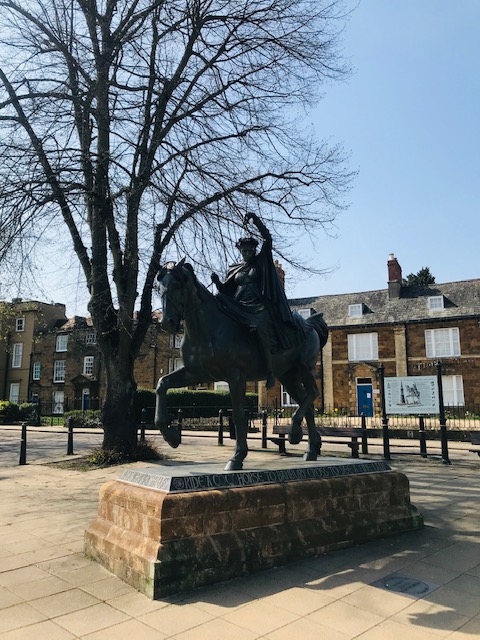
The Salt Way
There is a path behind the house we are staying in called the “Salt Way”. Pretty much every walk we set off on, starts from the Salt Way which measures approx 3km from start to finish. On Friday I was headed to Banbury (town) to take a pic of the Statue of the “Fyne Lady”. But first … some history about the Salt Ways.
Salt was a valuable commodity nicknamed “White Gold” as soldiers were paid in Salt.
The salt trade dates back to the iron age. Imagine a deeply wooded English country side. There are no proper roads and goods are transported mainly pack horses or cart. During these times “Salt Ways” became important trade routes.
The brine extraction and boiling industry established by the Romans flourished in Medieval times and was well documented in the Domesday Book.
Salt appears naturally as brine in Droitwich. It bubbles from the ground at a concentration 20 times stronger than sea water. The result, after boiling off the water, is a much cheaper and purer salt – a valuable commodity.
This particular route was first noted on maps in the 19th Century but it is likely that the route is much older.
Bulk salt mining still continues today as salt remains important for de-icing winter roads, making fertilisers, dyes and water softeners.
Source: Signage on Salt Way provided by Morris Homes Midlands Ltd
Arrived at the statue of “Ride a Cock Horse” fame and took a couple of pics of the historic buildings in town and the spring flowers en route.
For anyone who is interested in info on the Fine Lady Statue – click here.
If you’re well and truly going insane in isolation … some interesting history on Banbury itself can be found here.











Did you know?
True Story
The modern-day word “salary” relates to the “salarium” (“sal” meaning salt) or salt cake used to pay Roman soldiers and civil servants





4 Comments
Jonathan
You are a (salt) mine of information! I only live 30 miles away and didn’t know any of that! Lovely pictures once again!
Theresa Rheaume
Beautiful!! And those flowers!! Loved the history lesson!! Stay safe and heathy!! 💜
Lynda Maxwell
Very interesting & lovely to see all the blossoms & flowers
Patricia Forner
What a lovely village Banbury Cross. Thank you for the history and the photos. Especially loved the photos of the spring flowers. Reminded me of my garden that I planted at home in the U.S. Stay well, happy, and adventurous.
Love, Patricia Forner